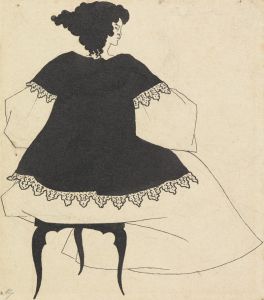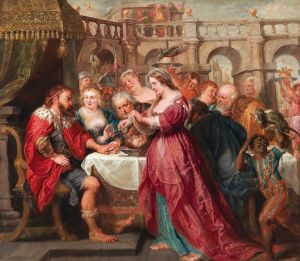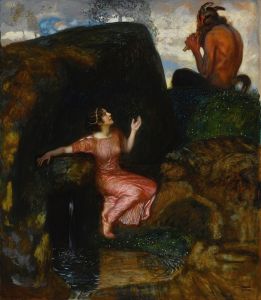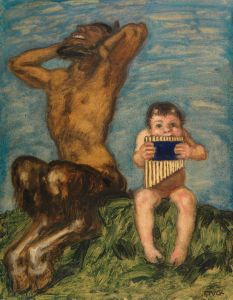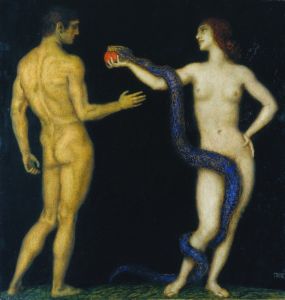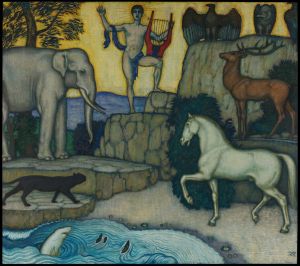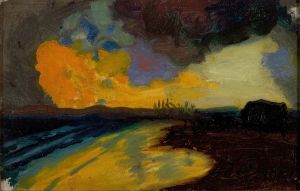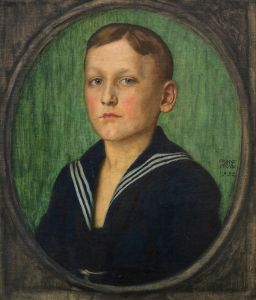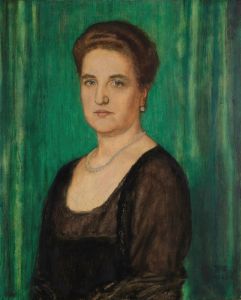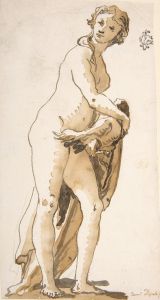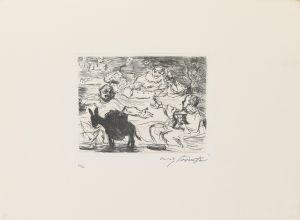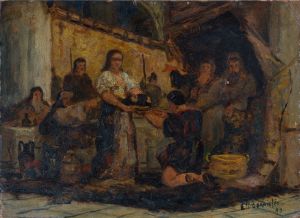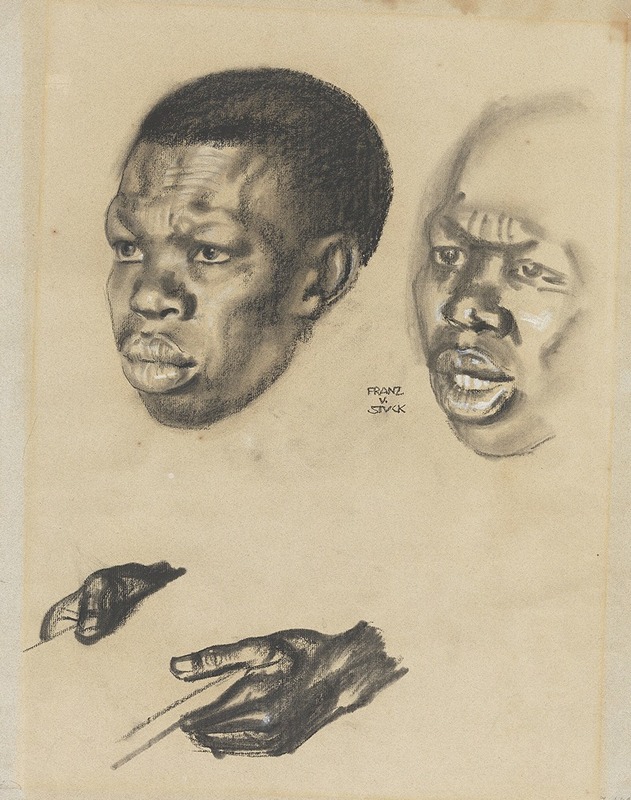
Studie zum Kopf der Dienerin für ‘Salome’
A hand-painted replica of Franz von Stuck’s masterpiece Studie zum Kopf der Dienerin für ‘Salome’, meticulously crafted by professional artists to capture the true essence of the original. Each piece is created with museum-quality canvas and rare mineral pigments, carefully painted by experienced artists with delicate brushstrokes and rich, layered colors to perfectly recreate the texture of the original artwork. Unlike machine-printed reproductions, this hand-painted version brings the painting to life, infused with the artist’s emotions and skill in every stroke. Whether for personal collection or home decoration, it instantly elevates the artistic atmosphere of any space.
Franz von Stuck was a prominent German painter, sculptor, and architect, associated with the Symbolist movement. Born on February 23, 1863, in Tettenweis, Bavaria, Stuck became one of the founding members of the Munich Secession in 1892, a group that sought to break away from traditional academic art and promote modernist approaches. His work often explored mythological and allegorical themes, characterized by a distinctive use of color and dramatic compositions.
One of Stuck's notable works is "Studie zum Kopf der Dienerin für ‘Salome’" (Study for the Head of the Servant for 'Salome'). This piece is a preparatory study for his larger work, "Salome," which depicts the biblical story of Salome, the stepdaughter of Herod Antipas, who is often associated with the demand for the beheading of John the Baptist. The study focuses on the head of a servant, a figure that plays a supporting role in the narrative of Salome.
Stuck's "Salome" was completed in 1906 and is renowned for its dramatic portrayal of the femme fatale archetype, a common theme in Symbolist art. The study of the servant's head reflects Stuck's meticulous attention to detail and his ability to convey emotion and character through facial expressions. The servant, although a secondary character, is integral to the composition, adding depth and context to the main narrative.
The study showcases Stuck's skill in capturing the subtleties of human expression and his interest in the psychological dimensions of his subjects. His use of chiaroscuro, the contrast between light and dark, is evident in this study, highlighting the contours of the servant's face and imbuing the work with a sense of drama and intensity. This technique is a hallmark of Stuck's style, contributing to the overall mood and thematic depth of his paintings.
Franz von Stuck's work, including "Studie zum Kopf der Dienerin für ‘Salome’," reflects the broader cultural and artistic movements of his time. The Symbolist movement, with its emphasis on the mystical and the emotional, sought to express ideas and emotions that went beyond the literal and the realistic. Stuck's art often delved into themes of sensuality, power, and the supernatural, resonating with the Symbolist ethos.
Throughout his career, Stuck received numerous accolades and held a significant influence on the art world. He was appointed as a professor at the Academy of Fine Arts in Munich, where he taught and mentored future artists, including the renowned painter Paul Klee. Stuck's legacy is evident in his contributions to both the visual arts and the development of modernist aesthetics.
"Studie zum Kopf der Dienerin für ‘Salome’" remains an important work within Stuck's oeuvre, exemplifying his artistic prowess and his engagement with complex themes. The study not only serves as a testament to his skill as a draftsman but also provides insight into his creative process and the thematic concerns that permeated his work.






